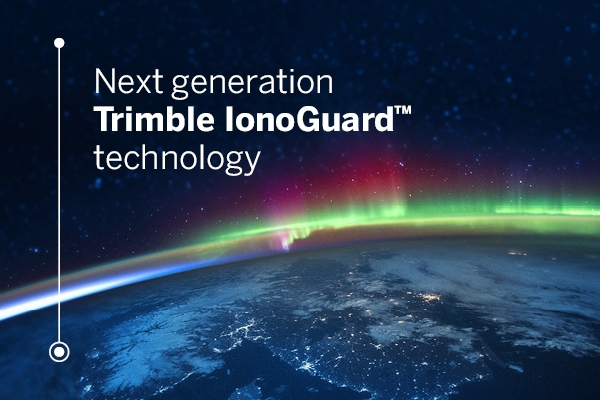Trimble has introduced Trimble IonoGuard, a next-generation technology designed to mitigate ionospheric disruptions in positioning and navigation by minimizing performance impacts caused by scintillation or signal noise.
Referred to as solar activity, ionospheric disturbances peak every 11 years. The next major disruption, Solar Cycle 25, is expected to peak between 2024 and 2026. Ionospheric activity can directly impact the quality of GNSS signals, leading to the degradation of position accuracy.
While this type of disturbance has the greatest impact on high precision GNSS users operating around equatorial and high latitude regions, global disruptions are possible during the height of the solar cycle.
Available as a downloadable firmware update on Trimble GNSS receivers utilizing the Trimble ProPoint GNSS positioning engine, IonoGuard leverages the latest developments in Trimble’s high-precision receiver hardware design and signal tracking to deliver improved positioning performance in challenging environments. This will minimize the probability of a complete loss of GNSS signals and improve the quality of the signals’ accuracy and integrity.
“IonoGuard is Trimble’s newest innovation on the path to raise the bar on positioning integrity and performance worldwide,” said Stuart Riley, vice president of GNSS Technology.
“It brings our customers closer to uninterrupted and robust positioning data on every project, around the clock. Whether it’s mitigating the impacts of Solar Cycle 25 or another ionospheric event, we’re building advancements into Trimble GNSS technology to deliver accurate and reliable positioning solutions today, tomorrow and beyond.”
For Trimble’s geospatial, civil construction and OEM GNSS receivers supporting the ProPoint GNSS positioning engine, IonoGuard is a free downloadable firmware update expected to be available in the fourth quarter for receivers under warranty.
Source: trimble.com

